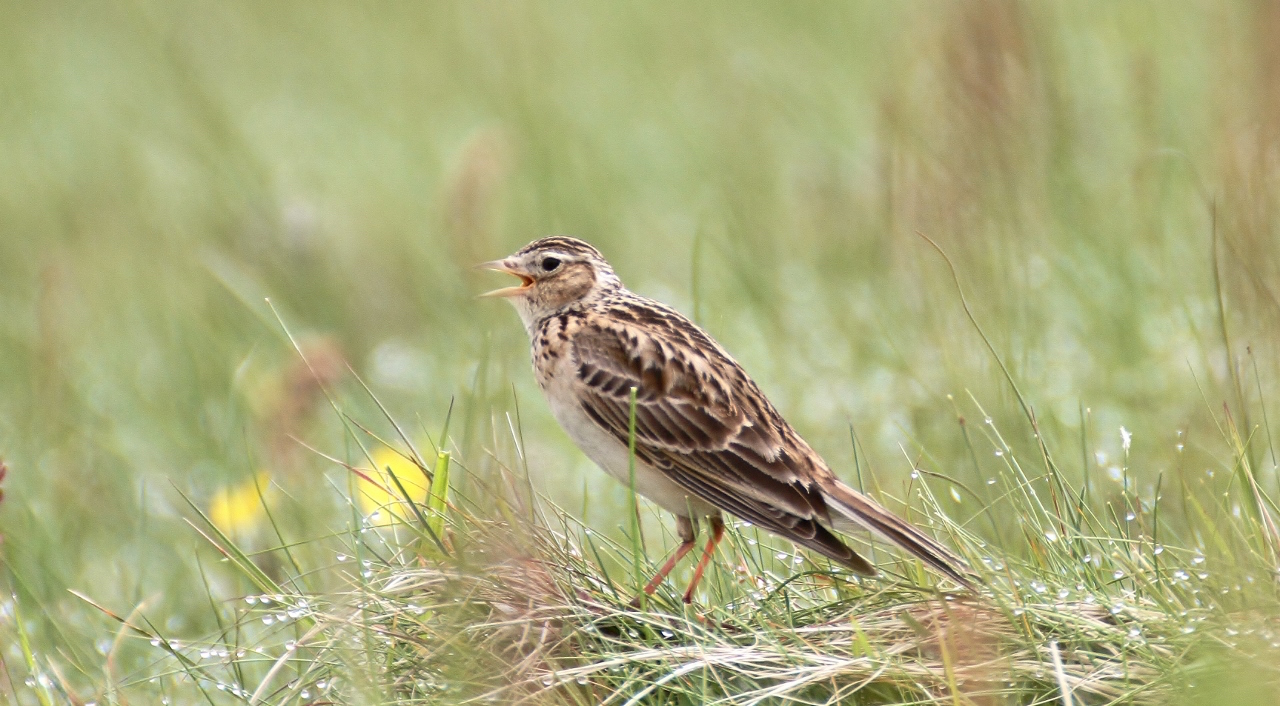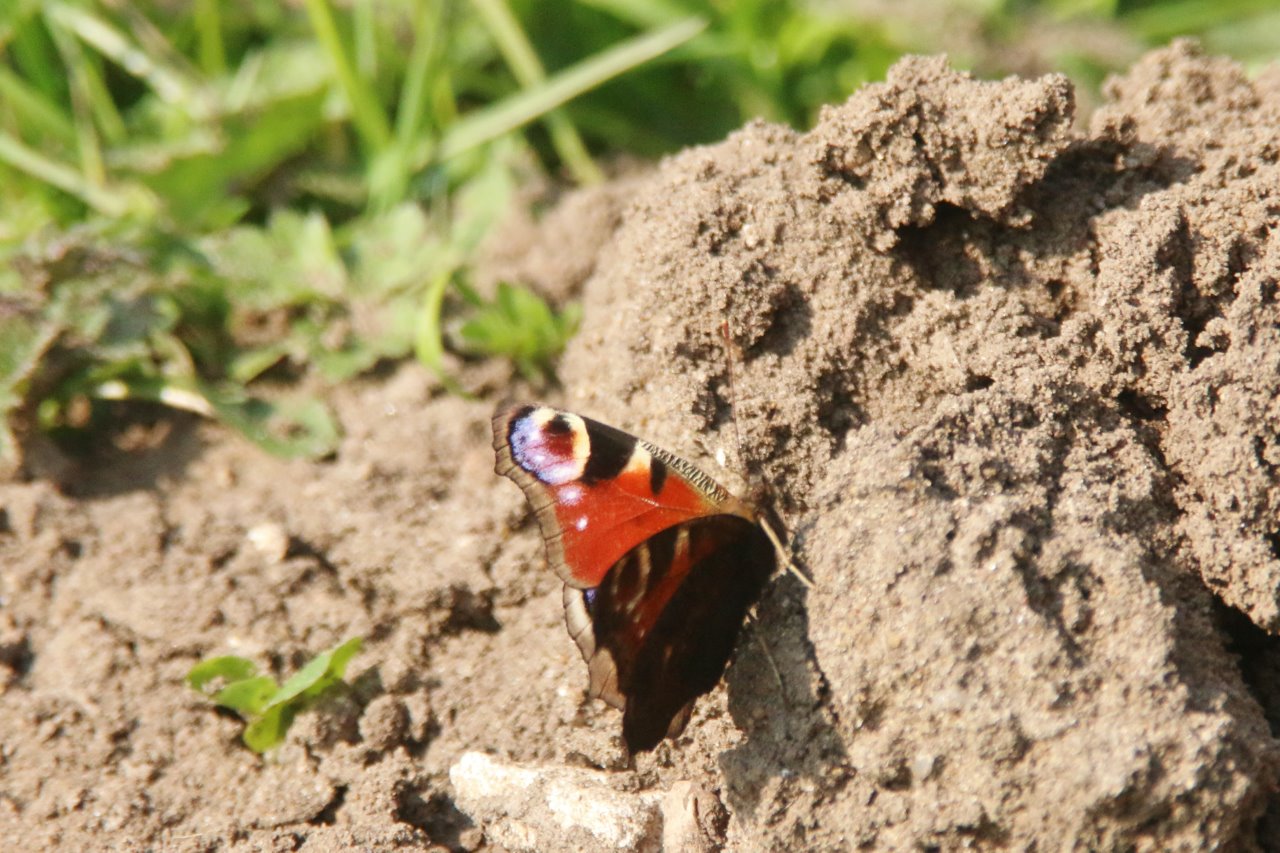 Abraham Lincoln
If given the truth, the people can be depended upon to meet any national crisis...
Abraham Lincoln
If given the truth, the people can be depended upon to meet any national crisis...
 Guildford news...
for Guildford people, brought to you by Guildford reporters - Guildford's own news service
Guildford news...
for Guildford people, brought to you by Guildford reporters - Guildford's own news service
Birdwatcher’s Diary No.105
Published on: 3 Apr, 2016
Updated on: 3 Apr, 2016
By Malcolm Fincham
By the middle of March the weather started to settle down. Although conditions were not always at there best for photography, it was a welcomed change to have entered into a dry spell.
On March 16 there was also a welcome visit from John, good friend of birdwatching pal Dougal. John had travelled up from his home town in Kent, with the hope that we might find him a few new sightings to add to his ‘year list’. With over 50 years of bird spotting behind him, this added to our challenge.
Dougal decided the best start to the day would be Thursley Common, as there was a good chance of finding John a few species not often seen in his native county. It wasn’t long before we were able to pick out a stonechat perched a little way off, as the fog there that morning slowly started to lift.
Soon after arriving at ‘shrike hill’ still shrouded by mist, we were able to pick out the silhouetted sight of the great grey shrike still wintering there.
Although it wasn’t until later that morning that I was able to get some better pictures of it.
As the sun started to poke through we were also able to add a few Dartford warblers to the day’s list.
Also adding to John’s year list the charming chorus of song from a healthy number of eight or more woodlark could be heard.
With a skylark also joining in for a while.
At a quiet, undisclosed location near by, we also managed to pick out the sound of a lesser spotted woodpecker, following the sound of its call, we were finally able to locate it high up on a dead silver birch tree. Only snatching a few record shots of it, it then took flight. Indeed, these birds are ‘lesser spotted’ both in name and nature these days, declining to a worrying level in the Surrey area.
Later that same day we visited Papercourt watermeadows near Send.
This was to get what would possibly a last sighting of a short-eared owl before it migrates. And to get a few more pictures of course.
We didn’t leave disappointed either, with two out hunting in the late afternoon sunshine.
My best pictures of the day while there was having just walked over the footbridge that leads out on to the marshland. Always looking for new wildlife pictures to add to my collection, we were taken by surprise when a weasel popped its head up from a gap in the wooden panels of the bridge.
Having got several reasonable pictures of a stoat in a previous report earlier this year, it was good to get the opportunity to compare their difference.
A weasel is weasely recognised and a stoat is indeed stoatally different! Looking rather like one of the critters from the game ‘whac a mole’ it disappeared and reappeared momentarily from various gaps on the bridge.Eventually brave enough to make a full appearance before ‘leggin’ it off into the undergrowth near by.
At Stoke Lake the wheels of spring had noticeably started to roll into motion.
A chiffchaff started singing.
Even last year’s great crested grebe fledgling was enjoying the sunshine.
Grateful it survived its first winter.

In Victorian times many kingfishers were shot and stuffed to put in glass cases, while their feathers were widely used by milliners to adorn hats.
Kingfishers continued to be seen on most of my visits, allowing me some great opportunities on some of the sunnier days. They may look bright blue, but they are actually a murky brown colour. This is due to the difference between pigmented and structural colouration. If we were to just see the light reflected directly from the wings it would be brown, but actually the light bounces around the structure of the wings, causing iridescent colouring.

Kingfisher at Stoke Lake. Adults are identical except for the bill colour, the bill is all dark in males, the female has a red base to the lower mandible.
Severe winters can lead to as many as 90% of Britain’s kingfishers perishing. Although adults pair in the autumn, they retain separate territories until the spring, when they gradually merge together.
The brilliant blue of the kingfisher’s back feathers are not the result of pigment, but the result of light striking specially modified layers of feather cells.
Halcyon days were periods of calm weather, traditionally the seven days each side of the winter solstice on December 21. when storms shall never again occur. They are named after the kingfisher, whose Greek name was ‘halcyon’.
Modern taxonomy also refers to the winds and sea in naming kingfishers after a classical Greek myth. The first pair of the mythical-bird Halcyon (kingfishers) were created from a marriage of Alcyone and Ceyx. As gods, they lived the sacrilege of referring to themselves as Zeus and Hera. They died for this, but the other gods, in an act of compassion, made them into birds, thus restoring them to their original seaside habitat. In addition, special “halcyon days” were granted.
Although the firecrest pictured in my previous report seems to have moved on, there were still plenty of goldcrest to photograph.
On March 17 I spotted my first frogspawn from the boardwalk across the watermeadows.
Adding to this was my first butterfly sighting of the year along the riverbank. A peacock out from hibernation.
I ended the week with a trip to Farlington Marshes near Portsmouth with Dougal. The brent geese were still there in large flocks, but were now starting to look a little restless. They were feeding up on grassland between the lagoons, then moving in short flights to various parts of the reserve looking for fresh vegetation.
I sensed it wouldn’t be too long now before they started to make their 2,500-mile trip back to their breeding grounds in Siberia.
Also still there but not so easy to spot were two short-eared owls, camouflaged well as they roosted in the long grass.
Adding to our year sightings was a ruff that I managed to pick out near one of the lagoons.
But our most elusive spot of the day (apart from a brief sighting of two bearded tits) had to be a fleeting glimpse and photo of one of several Cetti’s warbler we had heard that day, as it poked its head out from a reed bed.
On my travels I was also able to add a sighting of a pair of red kites.
Unfortunately with weather conditions so poor that day, I was left a little disappointed with the results.
On a brighter day just before Easter, I visited good friend Bob in Wood Street Village, but although with no recent pictures of red kites there, I did leave with some rather pleasing shots of the ring-necked parakeets that still visit his garden.
As well as at least eight yellowhammers.
Responses to Birdwatcher’s Diary No.105
Leave a Comment Cancel reply
Please see our comments policy. All comments are moderated and may take time to appear. Full names, or at least initial and surname, must be given.
Click on cartoon for Dragon story: Public Asked for Views on SCC’s Proposal for Reduced Speed Limits




Recent Articles
- Thames Water Announce Hosepipe Ban – But Not for Guildford
- Letter: Normandy Proposal Needs A Proper Services Audit
- Notice: Free Bereavement Support Programme
- Normandy Housing Plan Reignites Concerns Over ‘Damage To Our Community’
- Letter: The Class of 1955 Meets 70 Years On.
- Highways Bulletin: Reimagining Parking with Green Design
- Opinion: Never Have We Needed the Benefits of the Natural World More
- SCC Calls on the Government To Protect the Environment
- Two-Week Road Closure on Portsmouth Road for Gas Network Upgrade
- Charlotteville Cycling Club Organises Another Successful Race Event



Recent Comments
- Richard Cooke on Letter: Snail-paced Progress for Full Weir Repair
- Bethan Moore on Guildford’s First “Bike Bus”
- Andy Friend-Smith on Guildford’s First “Bike Bus”
- Peter Mills on Guildford’s First “Bike Bus”
- Des Flanders on Making History As Pewley School’s Class of ’54 Hold Their Final Reunion
- Margaret Rotherham on Guildford Festival Burst with Colour, Culture and Community Spirit
Search in Site
Media Gallery
Dragon Interview: Local Artist Leaves Her Mark At One of England’s Most Historic Buildings
January 21, 2023 / No Comment / Read MoreDragon Interview: Lib Dem Planning Chair: ‘Current Policy Doesn’t Work for Local People’
January 19, 2023 / No Comment / Read MoreA3 Tunnel in Guildford ‘Necessary’ for New Homes, Says Guildford’s MP
January 10, 2023 / No Comment / Read More‘Madness’ for London Road Scheme to Go Ahead Against ‘Huge Opposition’, Says SCC Leader
January 6, 2023 / No Comment / Read MoreCouncillor’s Son Starts Campaign for More Consultation on North Street Plan
December 30, 2022 / No Comment / Read MoreCounty Council Climbs Down Over London Road Works – Further ‘Engagement’ Period Announced
December 14, 2022 / No Comment / Read MoreDragon Interview: GBC Reaction to the Government’s Expected Decision to Relax Housing Targets
December 7, 2022 / No Comment / Read MoreHow Can Our Town Centre Businesses Recover? Watch the Shop Front Debate
May 18, 2020 / No Comment / Read More


































Gordon Bridger
April 8, 2016 at 6:55 pm
Great photos.
Debbie Hogan
August 20, 2016 at 11:10 pm
I was wondering if I saw and heard a ring-necked Parakeet in Stoughton just last week. Have there been many sightings in this area? Can Malcolm Fincham tell us?
Malcolm Fincham
August 21, 2016 at 10:34 pm
Although ring-necked parakeets are not seen so regularly on garden feeding stations at this time of the year, I too have seen and heard a few “flyovers” both locally and recently. I am sure your observation was correct Debbie.